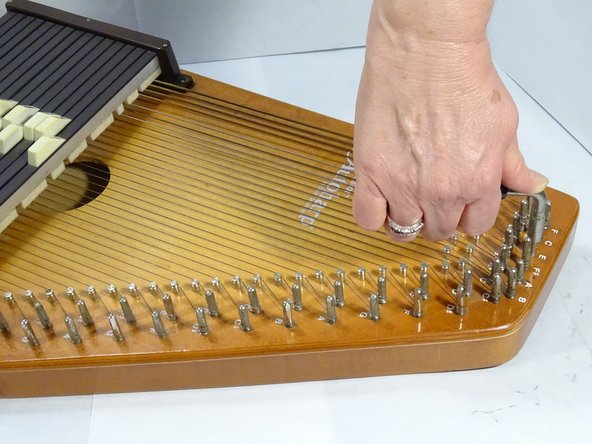Introduction
Autoharp strings can lose tension or break. This guide will demonstrate the steps for replacing a missing or broken string for a type B autoharp. This is demonstrated on an Oscar Schmidt Educator Series autoharp, but can be used for any type B autoharp.
Ce dont vous avez besoin
-
-
This is an Oscar Schmidt Educator Series Autoharp. There are two types of strings for autoharps. This model uses type B strings which have a ball end. My low octave E string is missing.
-
-
-
If the string is missing, as mine is, loosen the tuning peg before installing the new string. With the tuning hammer, turn the tuning peg counter clockwise (left) 3-1/2 turns. Loosening the tuning peg will prevent stripping the peg when you tighten the new string and you will not be able to keep the string in tune.
-
-
-
-
Use the tuning hammer to turn the tuning peg clockwise (right). Continue to hold your finger against the string as you turn the peg. Make sure the string winds below the hole and the rounds touch but do not cross. As the string becomes taut, check to see that it is aligned across the bridge pin.
-
-
-
The string should be taut. Now you are ready to tune the autoharp. Use the electronic tuner and adjust tension to the correct pitch. Adjust pitch by turning the tuning hammer in small increments. Turn counter clockwise (left) to lower the pitch and clockwise (right) to raise pitch.
-
You are ready to make beautiful music on your autoharp!
You are ready to make beautiful music on your autoharp!
Annulation : je n'ai pas terminé ce tutoriel.
4 autres ont terminé cette réparation.
Un commentaire
Is there a chart of individual autoharp string sizes so that I could find a similar size guitar string to replace a broken autoharp string?
























